After realising that large flocks of birds were visiting Ankasamudra Lake, Mr. Anand Babu, President, and Mr. Vijay Ittigi, member of the GreenHbH, Hagaribomanhalli, and other local bird enthusiasts launched action to protect the lake area. Due to their continuous efforts, the lake was declared a Bird Conservation Reserve in 2017 under Section 36 A of the Wildlife Protection Act of 1972, making it the first of its kind in North Karnataka on February 2, 2024. Soon, Ankasamudra was also designated as a RAMSAR site.
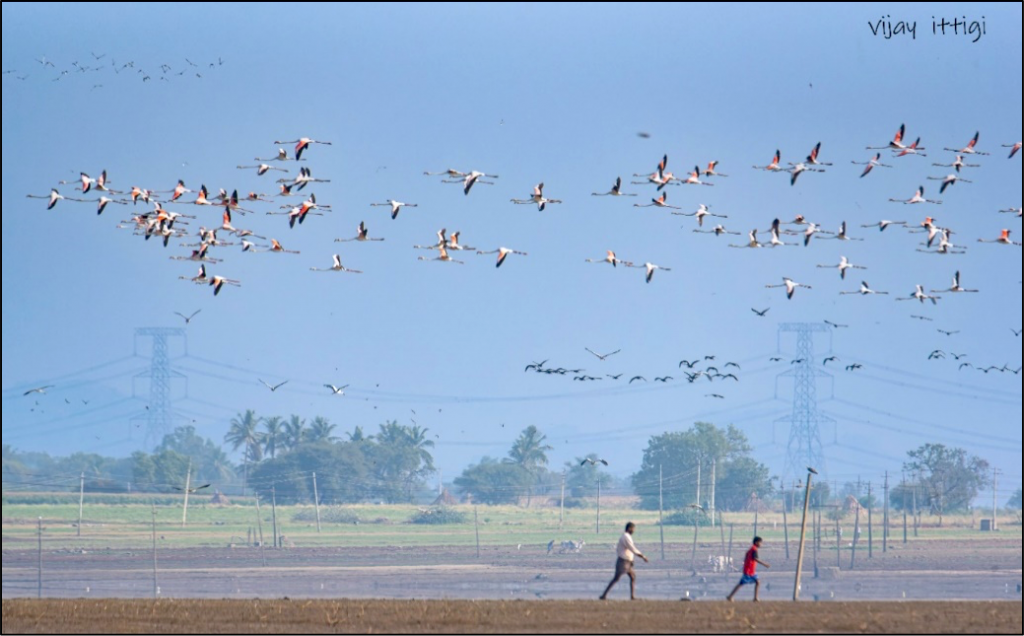
The reserve spans 244 acres and features half-submerged Acacia trees. According to various birdwatchers contributing to the e-bird website, the reserve hosts around 175 bird species, including around 50 migratory species. It lies along the Central Asian Flyway (CAF), attracting migratory birds primarily between November and February. Acacia nilotica trees were planted to aid habitat restoration, and a lift-irrigation system was introduced in 2001 to improve the water supply. The Forest Department has constructed walking trails along the border and a watchtower on the northeast for bird observation. Forest watchers guide visitors about the birds and the sanctuary. ‘The Ankasamudra Bird Festival’ in 2020 was one of the most successful events, highlighting Ankasamudra on the Indian Ornithology map.
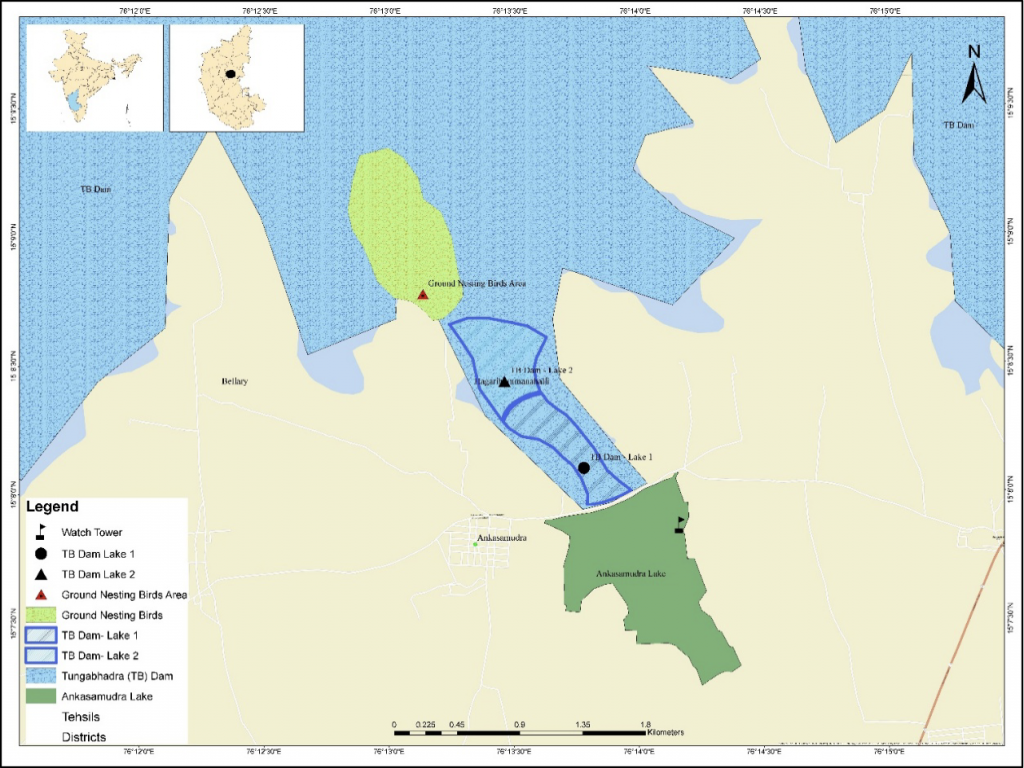
Conversely, the adjoining Tungabhadra reservoir area is a vital bird site, offering feeding, roosting, and breeding grounds in a less disturbed environment. In the 1980s, declining water levels adversely affected local agriculture, prompting farmers to cultivate the exposed land. Birds such as the Glossy Ibis, Black-headed Ibis, Cormorants, Painted Stork, and Grey Heron visit the adjacent backwaters during the day and roost in the Ankasamudra Lake at night. Ankasamudra Lake is a nesting site, providing ideal conditions such as tall, thorny trees, shallow water, and abundant food while minimizing human disturbance. During the monsoon season, water levels rise in the reservoir and the lake, sometimes resulting in floods. In summer, low water levels are pumped from the reservoir into the lake, exposing high bunds and fields. Many people have referred to Ankasamudra as the “Bharatpur of Karnataka.”
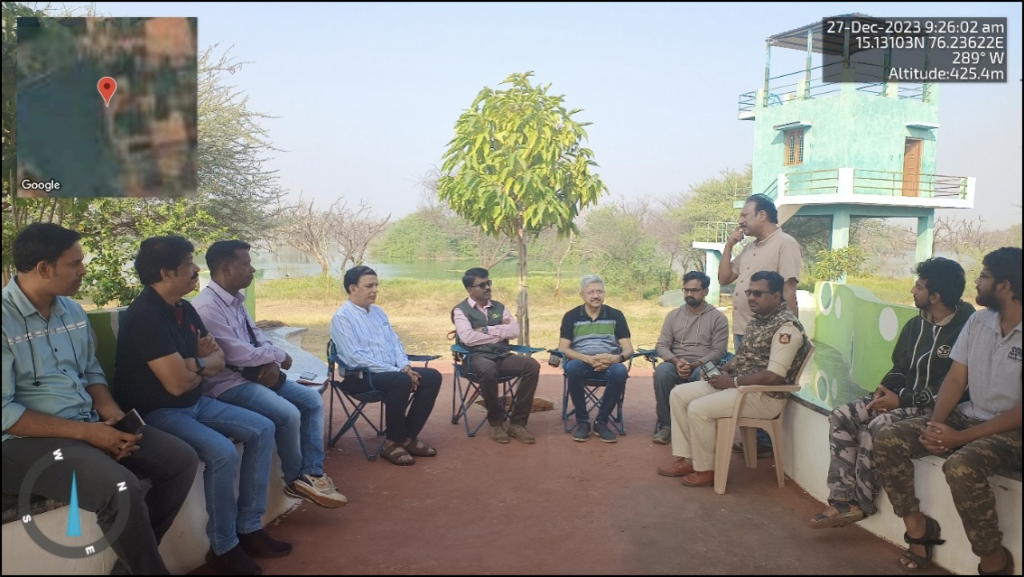
Mr. Anand Babu, the President of Green HbH, along with Mr. Vijay Ittigi, a dedicated member and enthusiastic birdwatcher, initiated an invitation to the BNHS to explore the Ankasamudra Conservation Reserve in November 2023. During this visit, they introduced the team to Dr Rajeev from Hospet, an avid birdwatcher, and Mr Rajendra, a knowledgeable Forest Watcher who would guide the excursion. The itinerary was carefully crafted to showcase various key locations within the reserve. Under the expert guidance of Vijay and Rajendra, the BNHS team would visit sites critical for understanding the ecological and conservation needs of the lake.
Brief Observation During The Site Visit
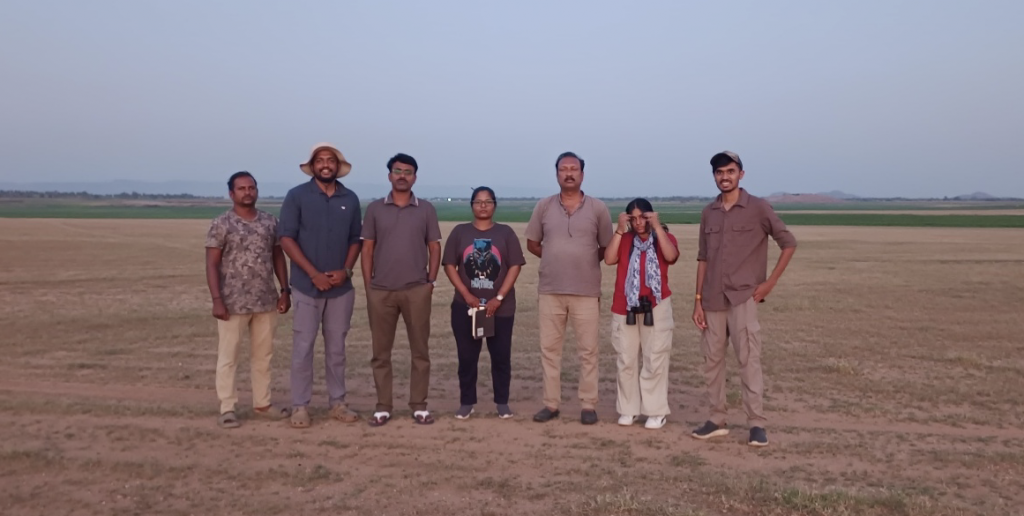
The visit of the BNHS team aimed to provide research insights for the protection and conservation of Ankasamudra Lake, which the Forest Department and the Tungabhadra Board manage. The exposed part of the Tungabhadra Dam backwaters, which serves as a breeding site for ground-nesting birds, and the power line Bachigondanahalli are critical for future research and conservation strategies. Observations indicated that parts of the TB dam backwater are not sufficiently protected, with shepherds and livestock frequently accessing the borders. The southeast area features summer crop fields and an abundance of insects. Overgrazing is a concern, though the region supports diverse birdlife, including the terns, pratincoles, and blue-tailed beaters in less disturbed areas. The team observed the Tungabhadra backwaters, where decreased water levels revealed two old lakes and exposed land used for cultivation. The region faces disturbances from fishermen, farmers, and livestock.
Growing Concerns About The Potential Dangers Powerlines Pose To Birds
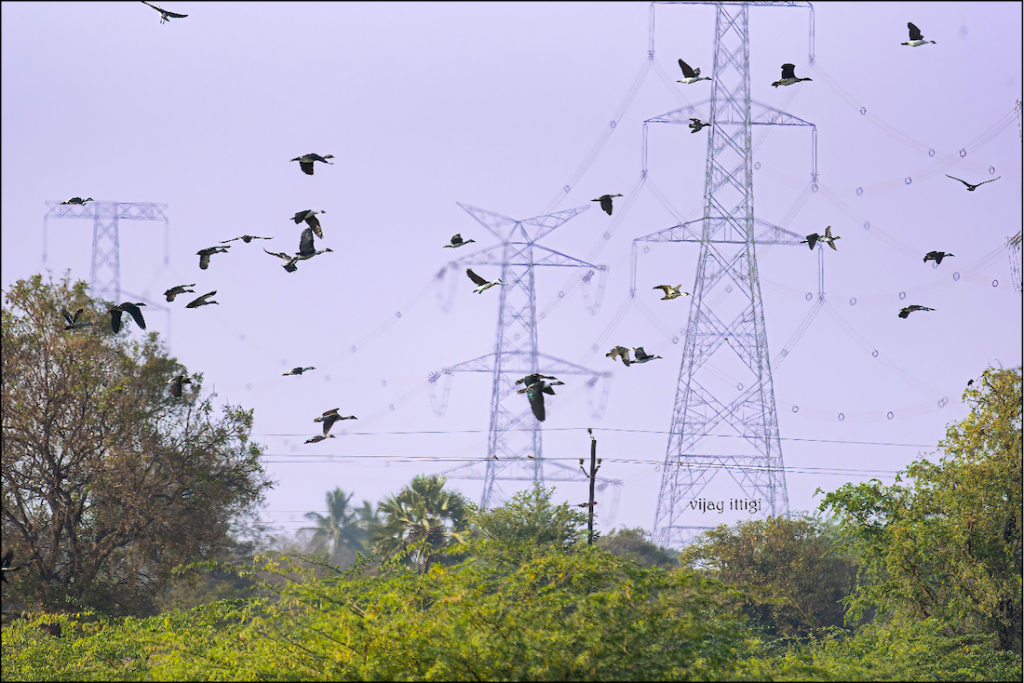
On November 24, 2023, a team visited the Bachigondanahalli power line and Ankasamudra Lake, where they noted a stream from TB Dam backwaters near Bachigondanahalli village, 9 km from the lake. The NTPC Kudgi-Bangalore Power line runs close to this stream, which has been linked to bird mortality, as Mr Vijay and Mr Rajendra shared. Mr Rajendra mentioned that bird congregation increases with higher water levels. The team observed various birds, including the Ibises, Northern Shoveler and Open-billed Stork, and noted that birds flying near the power line are at risk of collision. Dried grasslands nearby get threatened due to shepherds’ dogs hunting birds. Vijay Ittigi reported recent bird mortality from power line collisions and the impact of chemical sprays in agriculture fields on Garganey populations. A breeding site for ground-nesting birds was identified along the Dam Backwater, which risks exposure as water levels drop. To address these concerns, a long-term study is proposed to monitor bird populations, assess threats, and inform conservation efforts.
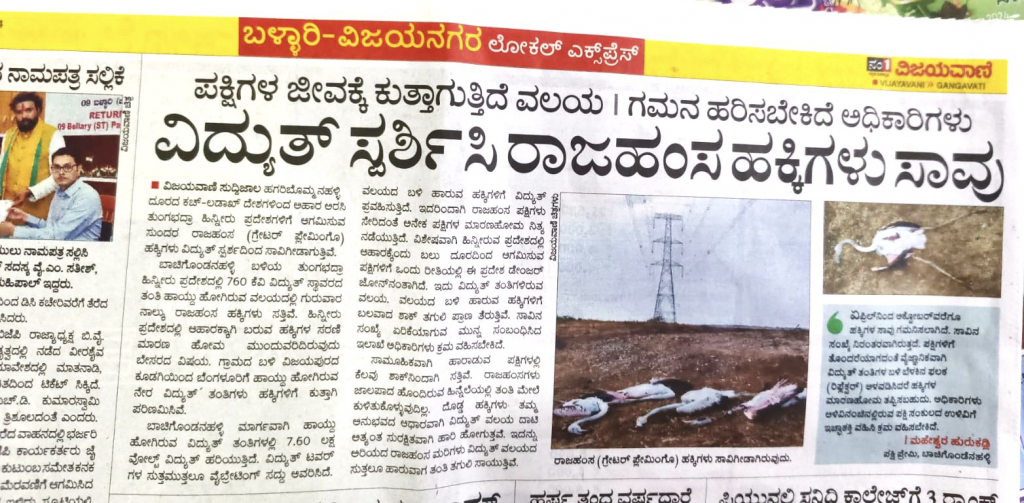
Team GreenHbH, on April 12 2024, reported a tragic incident involving four Greater Flamingos that lost their lives after colliding with powerlines near Ankasamuda. In response to this unfortunate event, team BNHS suggested that the carcasses of the birds be sent for a thorough post-mortem examination. Dr. Ajay Kumar, a seasoned veterinarian with an additional five years of experience as a wildlife vet and currently posted at the Veterinary Hospital in the Department of Animal Husbandry and Veterinary Sciences, conducted the analysis. His findings revealed that the cause of death was electrocution, highlighting a significant issue regarding avian safety around power infrastructure. Armed with the post-mortem report and supported by technical publications from the BNHS concerning birds and powerlines, team GreenHbH began to engage with government agencies to advocate for change.
In discussions with the local forest department and power distribution authorities, they learned that while undergrounding existing powerlines was impractical, installing Bird Flight Diverters (BFDs) would be a viable alternative. The team identified an eight-kilometre segment of powerlines that posed a critical threat to bird flight paths between Ankasamudra and its surrounding regions. However, representatives from the power distribution agency expressed concerns about the potential repercussions of shutting down the power supply, as it would disrupt services from the Chitradurga district to the coastal areas of Karnataka.
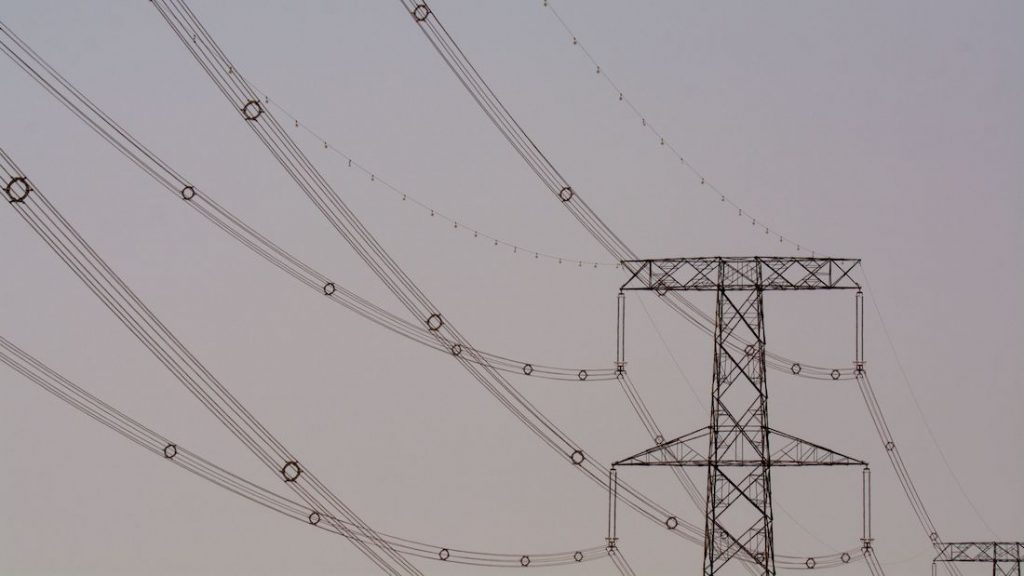
Despite these challenges, Team GreenHbH persisted, continuously following up with the relevant authorities. Their diligence ultimately paid off. Installing Bird Flight Diverters was completed, marking a significant step towards enhancing the safety of the Greater Flamingos and other avian species in the Ankasamudra and laying an example to follow across Karnataka.
Taking Conservation To The Next Level
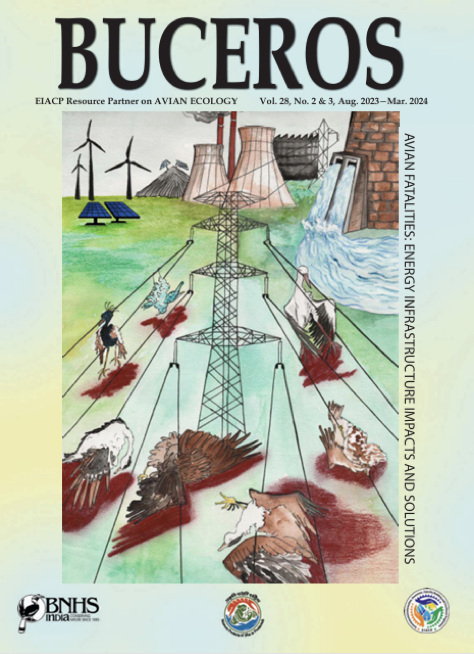
GreenHbH has recently embarked on a significant initiative focused on wildlife corridor mapping and land banking to preserve vital habitat patches that are at risk in the Vijay Nagar district. During our recent field visit, we also commenced a comprehensive mapping of ground-nesting sites that urgently require conservation efforts. This mapping exercise aims to identify and protect critical areas that serve as breeding grounds for various bird species, ensuring that these habitats are safeguarded for their continued survival. Their efforts underscore the importance of understanding and mitigating the threats faced by these nesting sites, allowing us to take targeted actions to enhance their protection and promote biodiversity in the region.
I take immense pride in being part of such an incredible team of GreenhBH that truly embodies the spirit of action and collaboration. Working alongside individuals who are not only talented but also deeply committed to making a difference is truly inspiring. Together, we focus on turning our ideas into tangible results, fostering an environment where initiative and determination drive our success. It’s motivating to be surrounded by people who share a common vision and are willing to put in the hard work necessary to achieve our goals.

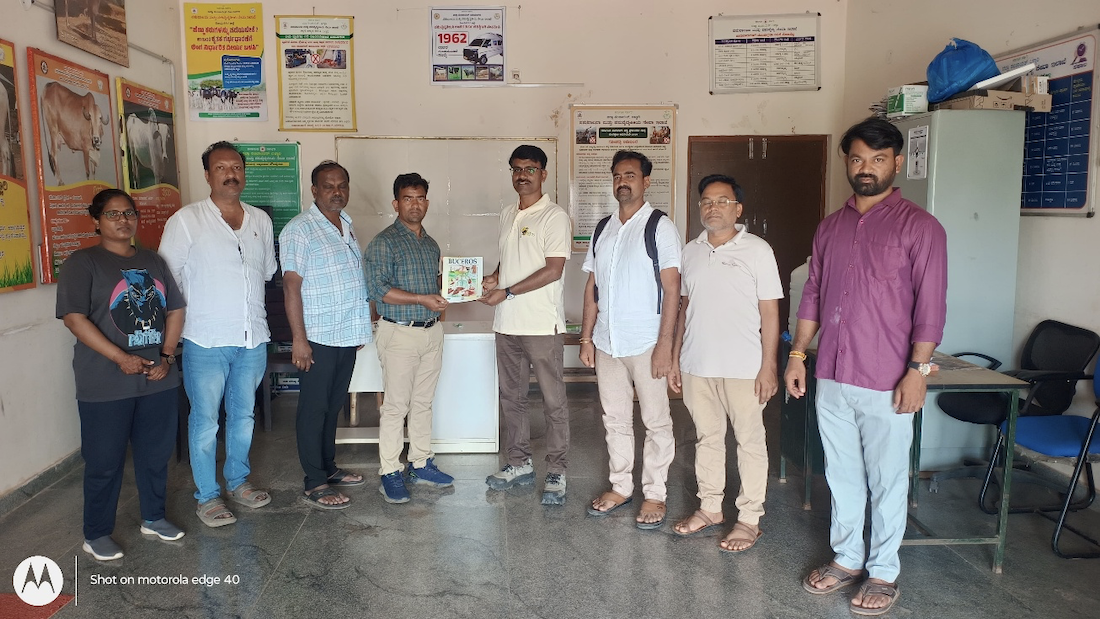
Yes, a remarkable job done by the GHBH team in the conservation of environment and development of Ankasamudra bird sanctuary. Hats off to the team.